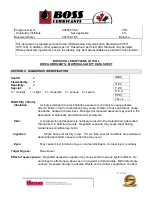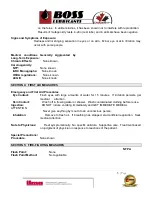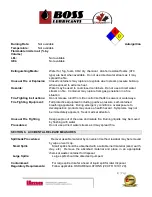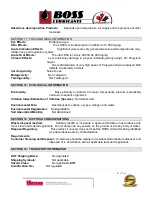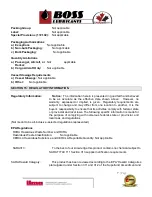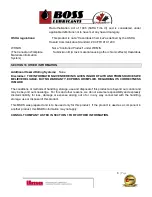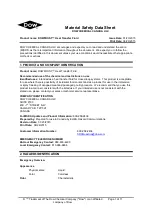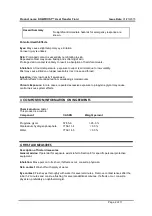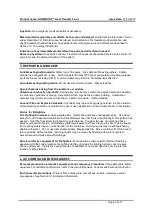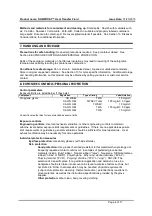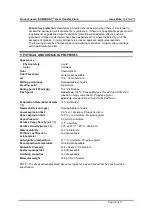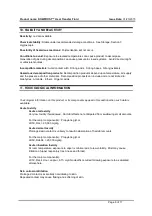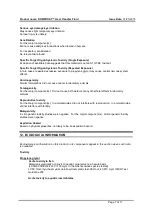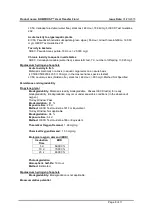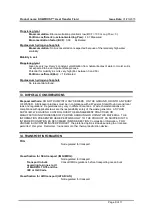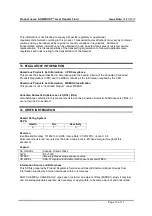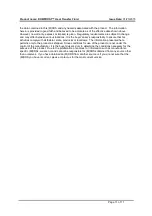
Product name: DOWFROST
™
Heat Transfer Fluid
Issue Date:
01/23/2015
Page 8 of 11
LC50, Ceriodaphnia dubia (water flea), static test, 48 Hour, 18,340 mg/l, OECD Test Guideline
202
Acute toxicity to algae/aquatic plants
ErC50, Pseudokirchneriella subcapitata (green algae), 96 Hour, Growth rate inhibition, 19,000
mg/l, OECD Test Guideline 201
Toxicity to bacteria
NOEC, Pseudomonas putida, 18 Hour, > 20,000 mg/l
Chronic toxicity to aquatic invertebrates
NOEC, Ceriodaphnia dubia (water flea), semi-static test, 7 d, number of offspring, 13,020 mg/l
Dipotassium hydrogen phosphate
Acute toxicity to fish
Material is practically non-toxic to aquatic organisms on an acute basis
(LC50/EC50/EL50/LL50 >100 mg/L in the most sensitive species tested).
LC50, Leuciscus idus (Golden orfe), static test, 48 Hour, > 900 mg/l, Method Not Specified.
Persistence and degradability
Propylene glycol
Biodegradability:
Material is readily biodegradable. Passes OECD test(s) for ready
biodegradability. Biodegradation may occur under anaerobic conditions (in the absence of
oxygen).
10-day Window: Pass
Biodegradation:
81 %
Exposure time:
28 d
Method:
OECD Test Guideline 301F or Equivalent
10-day Window: Not applicable
Biodegradation:
96 %
Exposure time:
64 d
Method:
OECD Test Guideline 306 or Equivalent
Theoretical Oxygen Demand:
1.68 mg/mg
Chemical Oxygen Demand:
1.53 mg/mg
Biological oxygen demand (BOD)
Incubation
Time
BOD
5 d
69.000 %
10 d
70.000 %
20 d
86.000 %
Photodegradation
Atmospheric half-life:
10 Hour
Method:
Estimated.
Dipotassium hydrogen phosphate
Biodegradability:
Biodegradation is not applicable.
Bioaccumulative potential
Summary of Contents for 600 GTS Series
Page 2: ......
Page 47: ...Appendix 9 3 Electrical Schematics Figure 56 600 GTS sub 40 Electrical Schematic...
Page 48: ...Appendix 9 4 Figure 57 600 GTS Electrical Schematic...
Page 49: ...Appendix 9 5 Figure 58 HR2250 Electrical Schematic...
Page 50: ...Appendix 9 6 Figure 59 Trailer Wiring Schematic...

